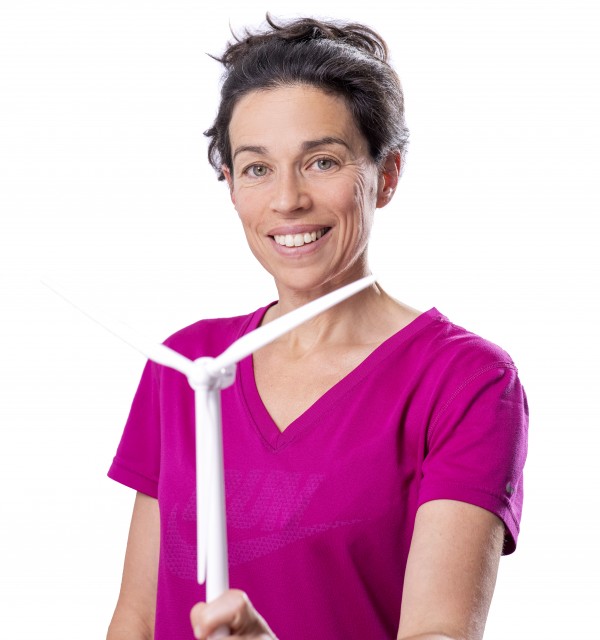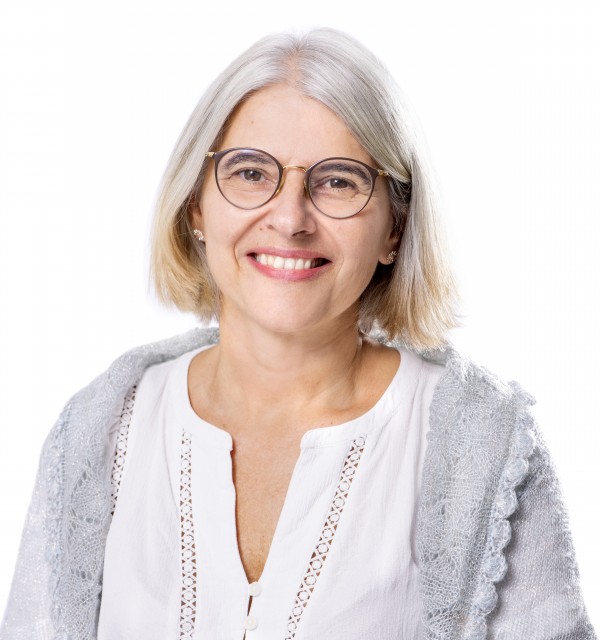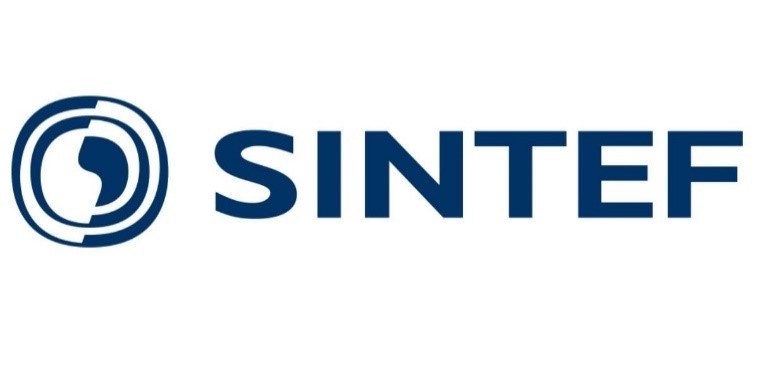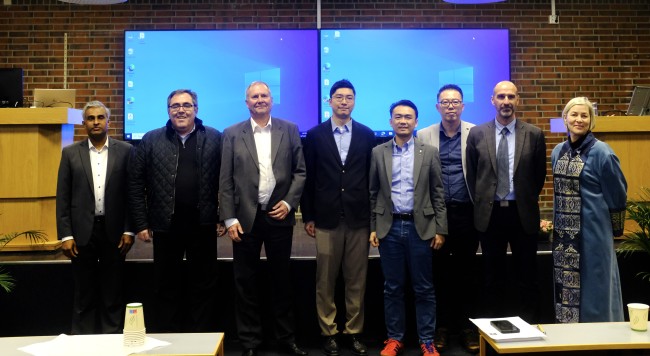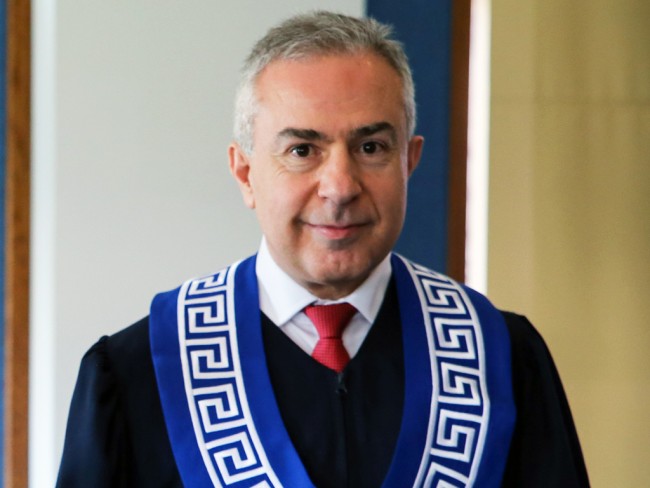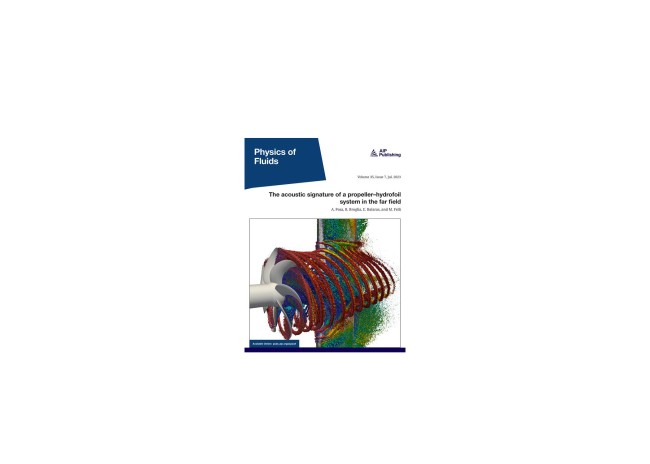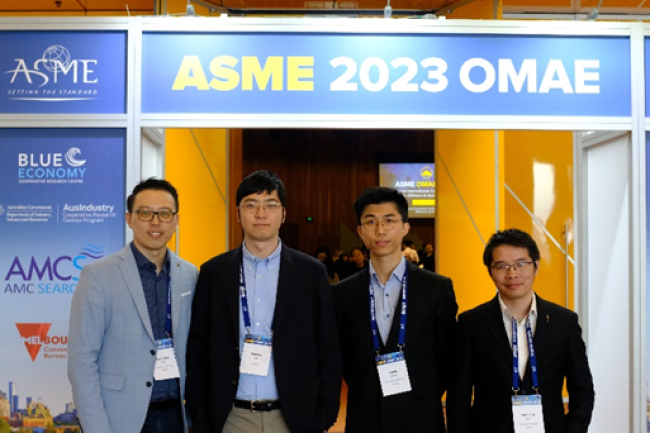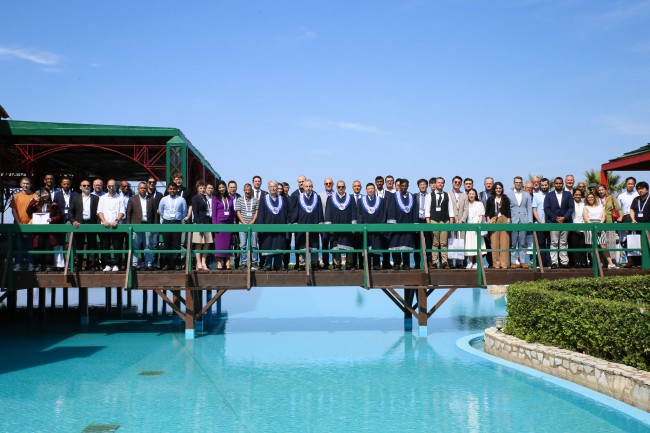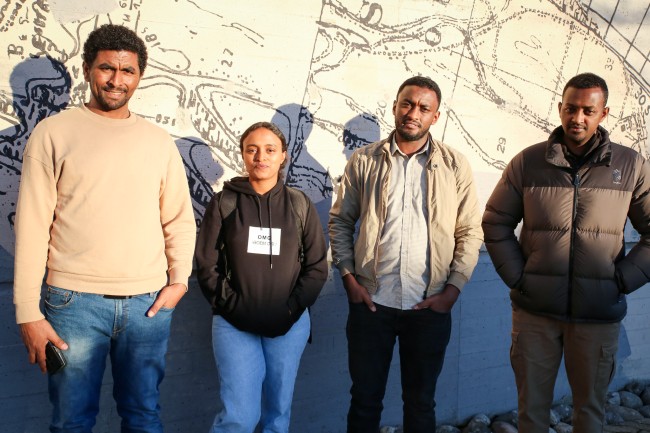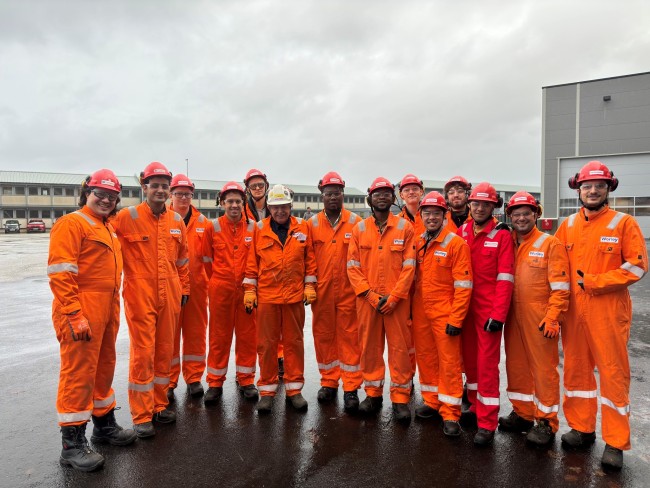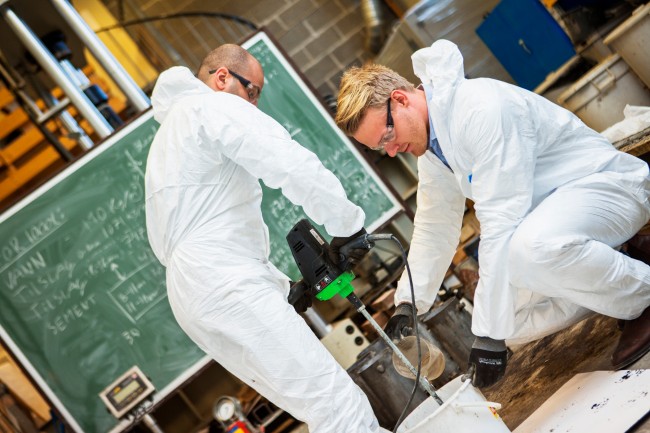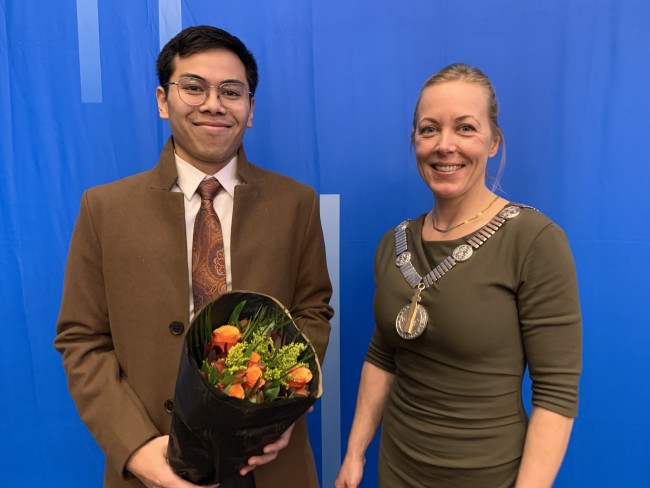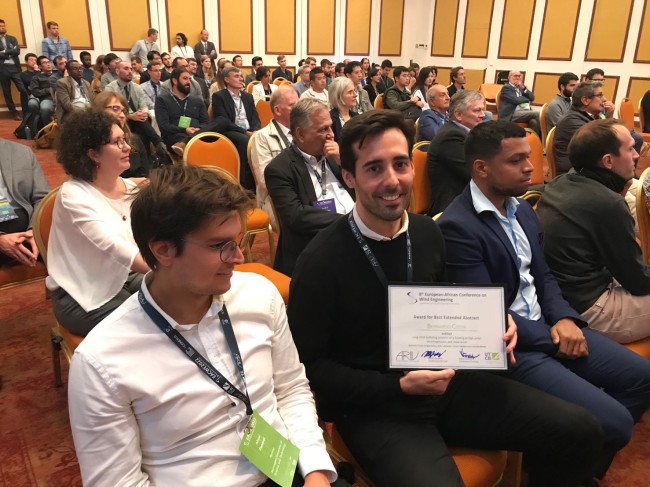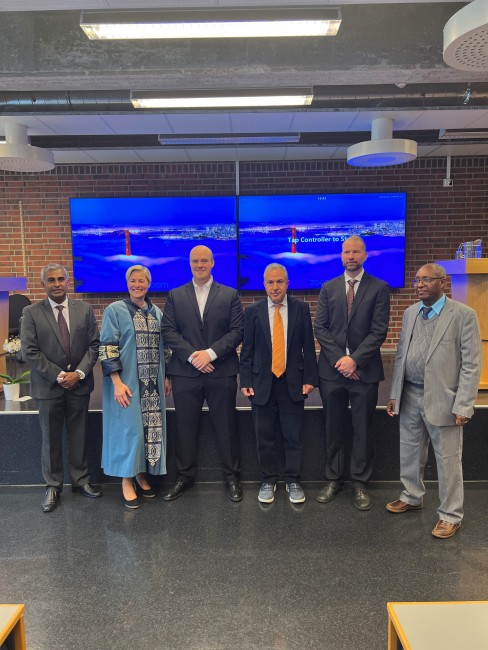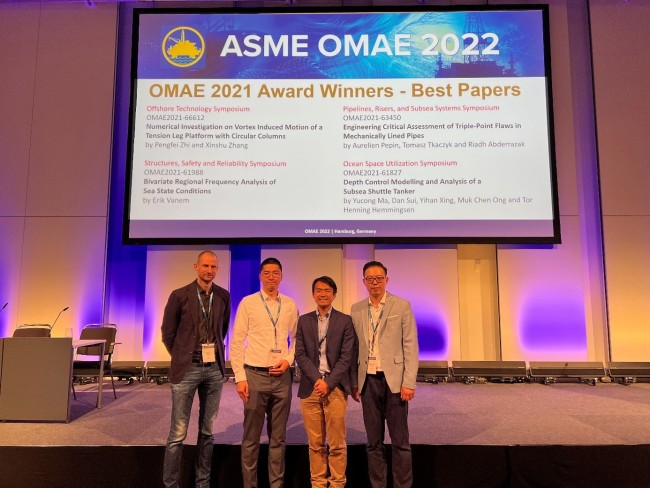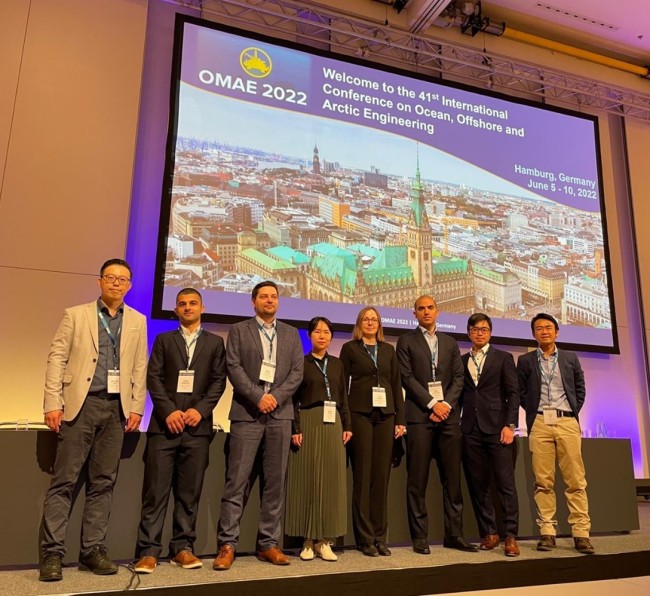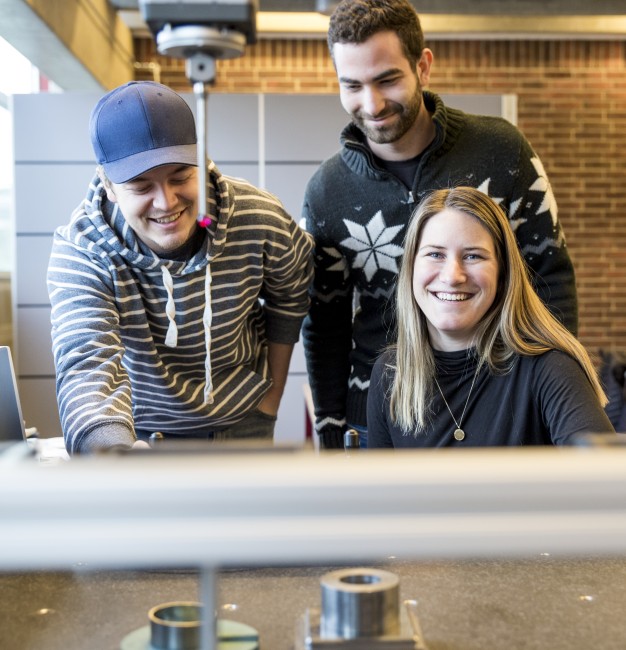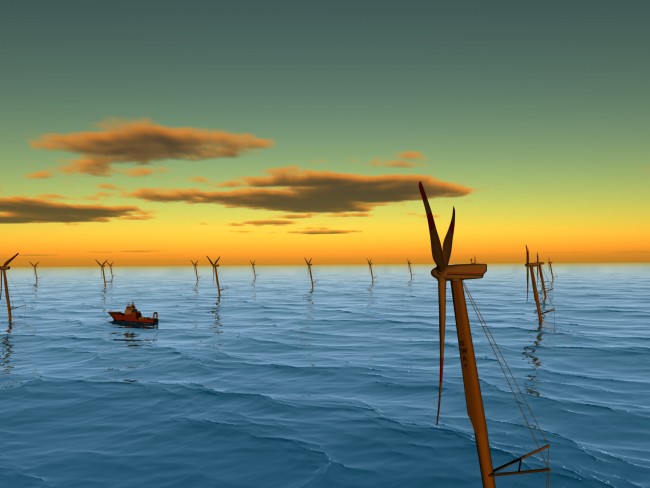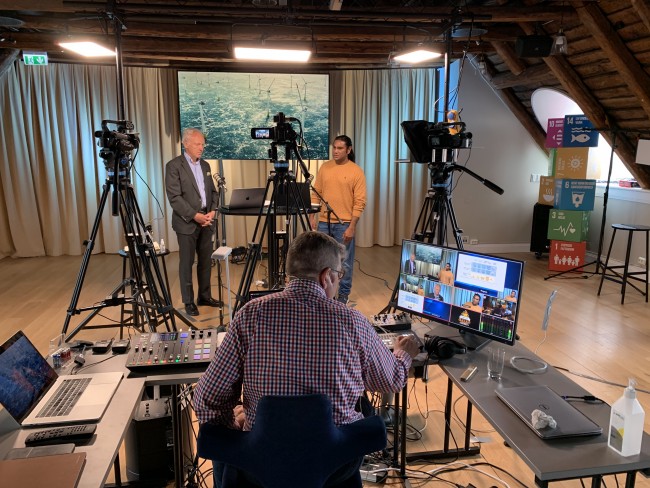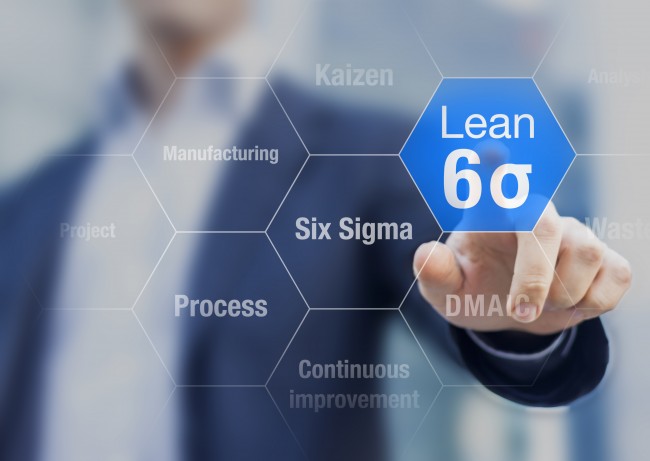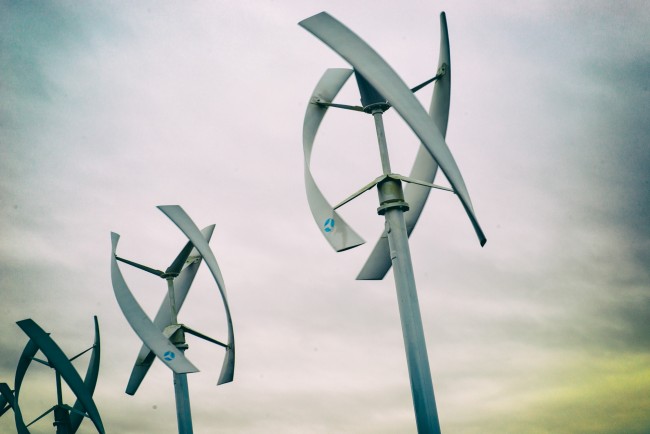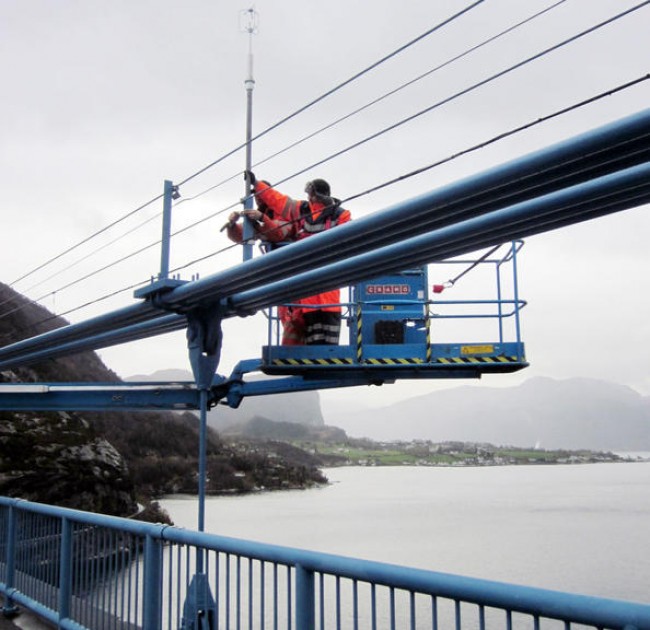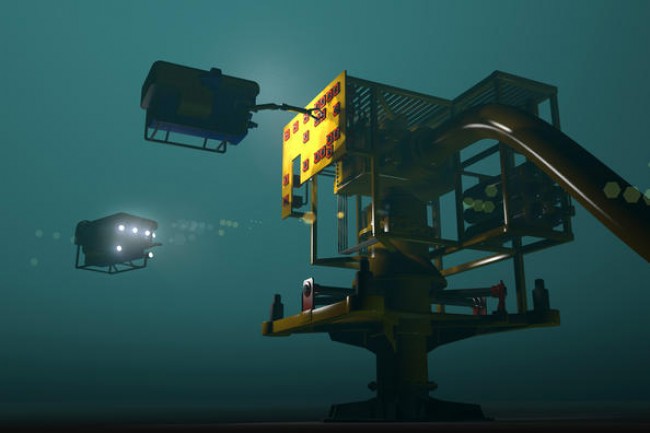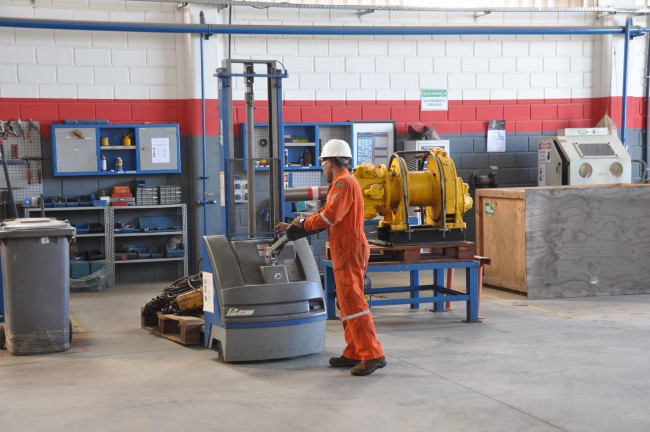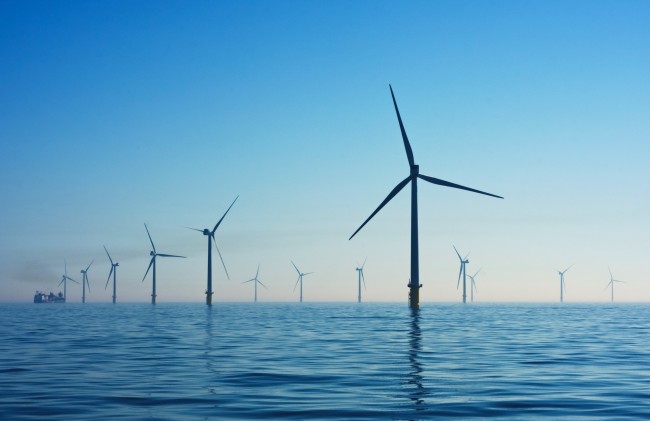How to reduce cost of energy for future large offshore wind turbines in free-wind and wake conditions by using full-scale wind and response data from offshore wind farms.
3-year FRIPRO project
UiS, UiB, SINTEF Ocean & SINTEF
12 mill. NOK
Spring 2025
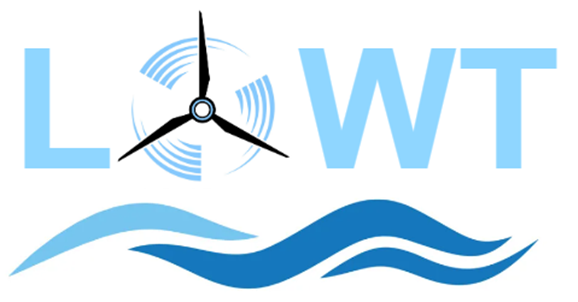
About the project
Floating offshore wind is a technology that promises to unlock a huge resource potential in deeper waters.
However, it is more than a simple extension of the offshore wind industry, constituting a new technology on its own right. Despite the many advances already made – and where Norway is driving in pole position - there is still an urgent need for in-depth research on floating wind technology in realistic conditions to accelerate the uptake. More precisely, two of the three grand challenges in wind energy identified by Veers et al are related to the lack of knowledge regarding the wind loading on offshore wind turbines and their associated dynamic response. Equinor has had a pilot park of five 6 MW floating turbines in Scotland operational since October 2018. Observations from Hywind Scotland have shown the thermal stratification of the atmosphere can substantially affect the structural response of a wind turbine to the incoming turbulent flow. Under convective conditions above the sea, there is a significant increase in turbulence at frequencies below 0.02 Hz. This frequency range is overlapping with the first eigenfrequencies of future floating offshore wind turbines (FOWT). The velocity spectra proposed in IEC standards do not account for this increase in turbulence and are known to differ from the turbulence spectra estimated offshore. Under stable conditions, the interactions between mesoscale and microscale atmospheric motion may become non-negligible but their influence on turbine motion and power production can be significant but it is unknown. Improved atmospheric turbulence models specifically developed for offshore conditions as targeted by this project, will reduce the uncertainty in the design of foundations, moorings, towers and blades for FOWT. Soon, bottom fixed offshore wind turbines rated at 12MW will have their first eigen-frequencies below 0.3 Hz. This means that their sensitivity to changes in turbulent energy at low frequencies may be significantly higher. Therefore, the current project is relevant to both fixed and floating offshore wind turbines in the future. Wind models used in the design stage of wind turbines are generally based on Monin-Obukhov similarity theory (MOST) and neutral conditions. Offshore, deviations from the MOST have been observed at heights as low as 45 m above the sea. This implies that a significant portion of the rotor plane of LOWT may be above the surface layer during a significant portion of the year. Failure to account for the limits of the surface layer can lead to poor estimations of the wind loading. Therefore, the adequate parametrization of the marine atmospheric boundary layer (MABL) is required. Although this topic is one of the greatest challenges in boundary-layer meteorology, it is now achievable thanks to recent progress in remote sensing and numerical weather prediction models.
Improved modelling of the wake flow conditions, which govern the fatigue loads of the turbines operating in wind farms, also rests on the refined knowledge of the incoming turbulent flow. Wind turbine wakes, which depend strongly on atmospheric stability, can substantially affect the motion of a FOWT. A slower wake recovery and reduction in wind-farm efficiency under stable atmospheric conditions and faster wake recovery in unstable atmospheric conditions have been observed. The wind shear, turbulent intensity, integral length scale, and other important inflow properties vary with different atmospheric stratifications and variation in these inflow properties causes a significant effect on the wake behavior including dynamic wake meandering (DWM). Therefore, an improved understanding and accurate prediction of both bottom-fixed offshore wind turbines and floating offshore wind turbine (BOWT/FOWT) wake under non-neutral conditions and their effects on wind park performance are needed for optimizing the design, specifically for maximizing the energy production and reducing the loads. The only possibility to account for atmospheric stability and FOWT motions is through CFD which is computationally demanding and for wind park design and optimization. The medium-fidelity design tools based on DWM for BOWTs have matured and are currently available in most commercial and academic simulation tools (HAWC2, FAST. Farm, DIWA). However, the design tools for FOWTs are still under development and need further exploration. The ambition is to extend medium-fidelity tools developed for BOWTs to FOWTs, by introducing the wind turbine motion in analytical and semi-analytical wake formulations. To overcome these challenges, an existing steady-state wake model will be modified to account for atmospheric stability and FOWT motions. This will be achieved by first performing detailed microscale CFD simulations and later these CFD results will be utilized to develop correlations to be incorporated with the existing wake models (Jensen and Ainslie) to overcome the challenges. Although microscale CFD simulation of the turbulent flow within a wind park is computationally demanding, it provides an improved understanding of transient wake under non-neutral conditions. The power of machine learning techniques applied to the high-fidelity data will be exploited to develop surrogate models which will be introduced in low-fidelity design tools as additional features.
Secondary objectives:
- Characterization of the wind field in the MABL in non-neutral conditions using high-frequency wind data from several offshore sites and analysis the COTUR dataset. Finally, we will recommend a suitable wind spectral model and coherence parameters for non-neutral wind conditions.
- Loads and response simulation of large floating wind turbines in non-neutral conditions. Validate the turbine response for large offshore wind turbines using in-situ measurements. Compare response and anchor line loads of different types and size of substructures and their sensitivities to non-neutral wind.
- Wake simulations of LOWT (bottom fixed and floating) in non-neutral conditions using CFD that will be implemented in a DWM model (SIMA-DIWA) for input into aeroelastic simulations.
The anticipated final outcome will be a reduction in uncertainty of the turbulence-induced loads on large LOWT in free-wind and wake conditions.
First team meeting
The project team were gathered in Stavanger to plan their activities for the year ahead.
The research project LOWT (Large Offshore Wind Turbines: structural design accounting for non-neutral wind conditions), funded by the Norges forskningsråd, is a 3-year collaboration between the University of Stavanger (UiS), University of Bergen (UiB), SINTEF Industry and SINTEF Ocean.
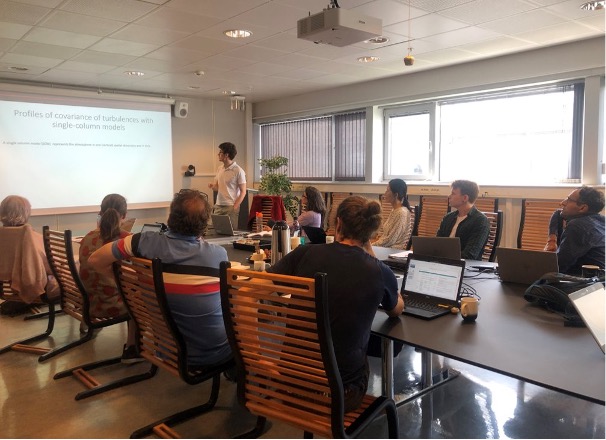
The main aims of the project are:
1) The improved design basis for Large Offshore Wind Turbines (LOWT) in non-neutral atmospheres
2) Improved methods to include non-neutral wind conditions into free wind and wake simulations for design.
The project team gathered in Stavanger on the 22nd of June to plan the activities for the year ahead and there were plenty of good ideas to help stimulate the new young researchers in our team. We were happy to welcome Lennart Vogt, our new Ph.D. student at UiS, and Stephan Kral, our PostDoc at UiB, to the group who will contribute to LOWT for the next 3 years.
Highlights from the meeting were:
1) A presentation from Stephan on how we can characterize atmospheric stability offshore and the input parameters need to scale atmospheric stability throughout the entire boundary layer height.
2) Some great ideas from Etienne Cheynet on engineering methods to scale turbulence in non-neutral atmospheres.
3) Feedback from Equinor on the priorities in the industry related to the LOWT project.
4) An update from the recently completed WINDMOOR project at SINTEF Ocean related to simulations of FOWT in non-neutral atmospheres particularly the PhD work of Irene Rivera Arreba.
5) A status update on DIWA, a Dynamic Wake Model (DMW) model, developed by SINTEF Ocean and SINTEF Industry.
The project objectives are ambitious but anything is possible when powered by cake and good colleagues. Get in touch if you would like to find out more or collaborate!
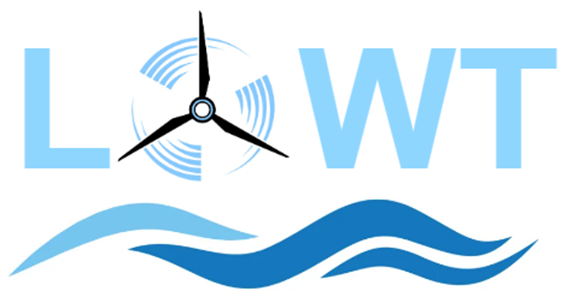
Researchers
Department of Mechanical and Structural Engineering and Materials Science
Department of Mechanical and Structural Engineering and Materials Science
Department of Mechanical and Structural Engineering and Materials Science
Researchers from partner institutions:
Joachim Reuder, UiB
Etienne Cheynet, UiB
Stephan Kral, UiB
Balram Panjwani, SINTEF
Lene Eliassen, SINTEF
Partners
University of Stavanger
University of Bergen
SINTEF
News
Design of autonomous underwater vehicles
Yucong Ma has researched dynamic analysis and design of subsea shuttle tanker systems.
Receives award for innovation in computing
Professor Dimitrios G. Pavlou was recently awarded the prestigious Hojjat Adeli Award for Innovation in Computing.
Their article in Physics of Fluids was selected as “Featured Article”
Physics of Fluids (PoF) belongs to American Institute of Physics (AIP) academic journals and is traditionally known as o...
UiS researchers were awarded with scholarship
Only 34 young researchers around the world were selected to participate in the OMAE2023 Outreach for Engineers Forum. Th...
Olympiad in Engineering Science summed up
Scientists and engineers from all over the world were gathered in Olympia in Greece to take part in the first ever engin...
UiS takes part in research on Arctic shipping
The goal is to find environmentally friendly solutions for shipping and transport in Arctic waters.
3 million for green offshore research
UiS researchers got funding for Polish-Norwegian collaboration.
From Ethiopia to UiS to study mechanical engineering
Three doctoral students and two master students share their experiences after one semester with engineering studies at t...
Students visited Rosenberg
28 students participated in a trip to the Rosenberg Worley facilities in Buøy.
Civil and Structural Engineering research group
Our research group has competence on design, analysis and testing of materials and structures. The current research and ...
Won Innovation Award for master's students
On the 25th of October 2022, Izwan Ahmad was awarded the 2022 Innovation Awards for master’s students by Rogaland county...
Won prize for best abstract
PhD candidate Bernardo Costa came out on top in the competition for best extended abstract during a wind engineering con...
Maintenance of ageing structures and mechanical equipment
Fredrik Bjørheim, PhD candidate at the Faculty of Science and Technology, has investigated damage assessment and modelin...
This invention produces electricity from marine and riverine currents
Researchers at UiS have developed an energy converter that creates electricity from sea currents and river flows.
Fatigue and Structural Integrity Group (FSIG-UiS)
The reason of 98% of the failures of mechanical systems and 60% of the failures of structures subjected to variable load...
Paper from UiS won the best paper award
The paper was awarded at the 40th International Conference on Ocean, Offshore and Arctic Engineering (OMAE2021).
Scholarship awarded to 6 UiS PhDs
Only 25 young researchers around the world were selected to participate in the OMAE2022 Outreach for Engineers Forum. 6...
Industrial Asset Management
Smart Assets, Digital and Integrated Operations, and Condition monitoring and Maintenance Analytics.
Mechanical engineering and materials science
The research group for mechanical engineering and materials technology has broad expertise in the design of mechanical c...
Marine and Offshore Technology / Ocean Technology
Oceans cover more than 70 % of the earth’s surface. However, those are still much unexplored.
New safety solutions for the wind sector
Master student Sharath Chandar Joghee is collaborating with the local company Energy Innovation to implement new safety ...
Lean 6σ Learning Academy
UiS is part of the Lean 6σ Learning Academy, organised by European Networks for Performance Enhancement in Mechanical (M...
Their paper became "featured article" in Physics of Fluids
Muk Chen Ong and Guang Yin recently got their paper published in Physics of Fluids, one of the best fluid mechanics jour...
OTICS – collaboration
Ocean Technology Innovation Cluster Stavanger (OTICS) connects researchers, educators and students at UiS with partners ...
OTICS – Offshore Wind
The demand and development of global wind power energy have significantly increased in the past decades. The wind power ...
OTICS – Fjord Crossings
This area focuses on Wind and Wave Load and Response Modelling and Monitoring.
OTICS – Marine and Subsea Technology
UiS researchers study a range of issues connected to Offshore and Subsea Technology.
Became editor of the highest impact factor journal in Civil Engineering
Professor Dimitrios Pavlou at Department of Mechanical and Structural Engineering and Materials Science recently became ...
Department of Mechanical and Structural Engineering and Materials Science
The Department of Mechanical and Structural Engineering and Materials Science is a leading academic environment for educ...

